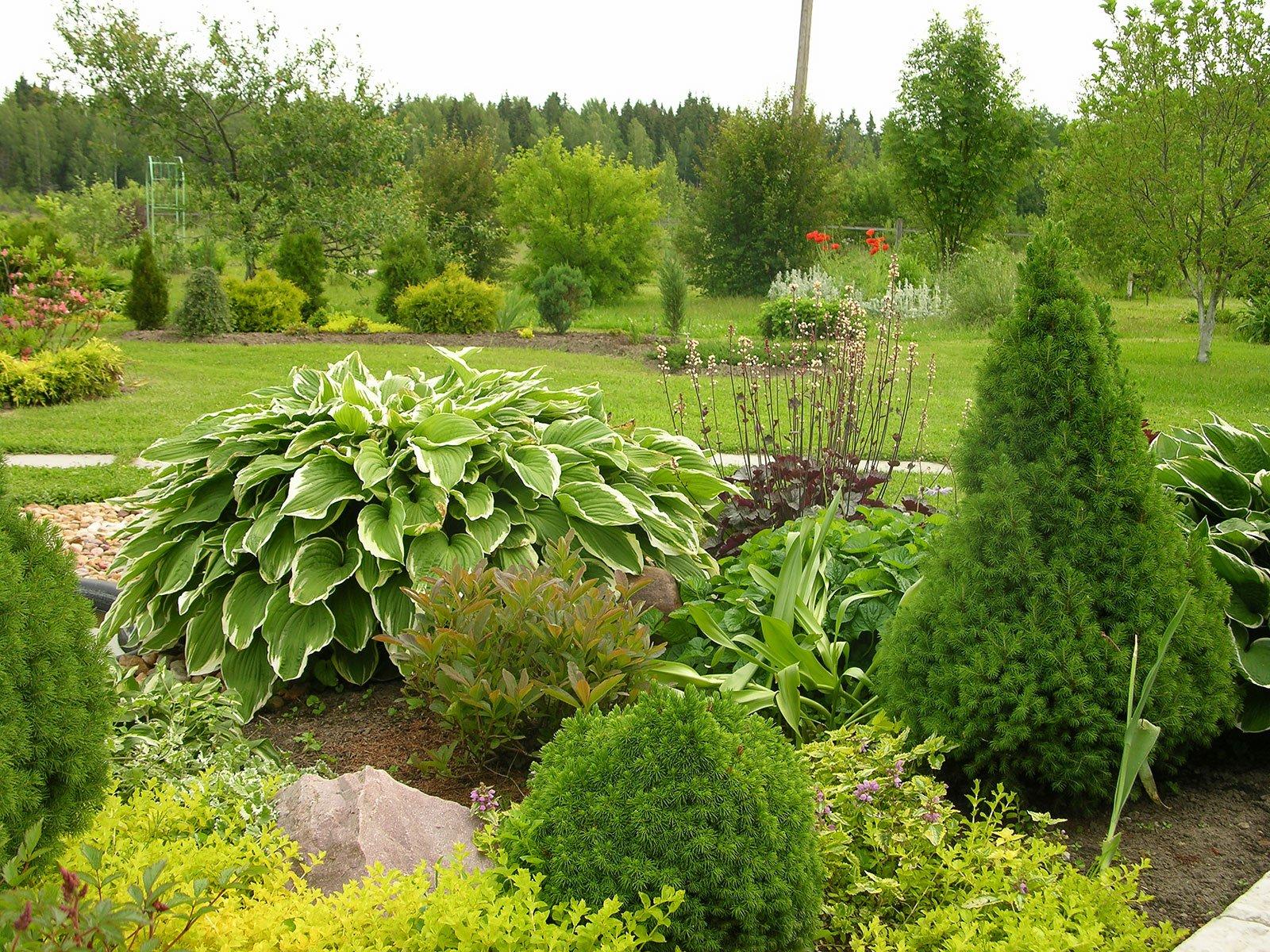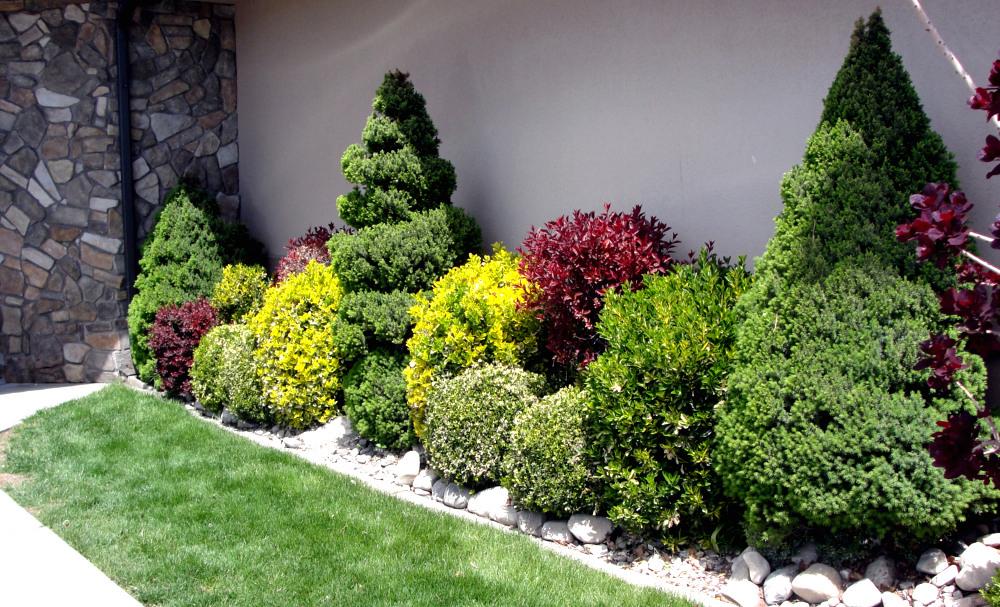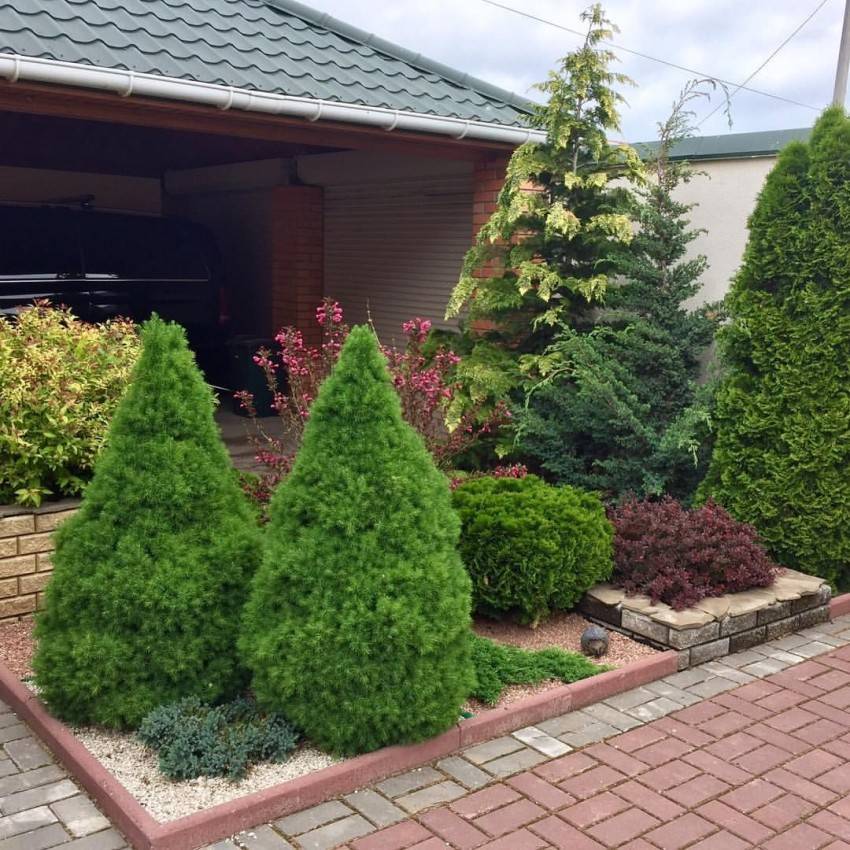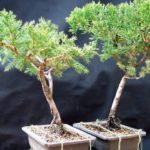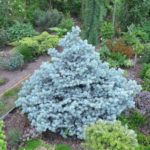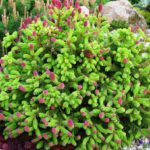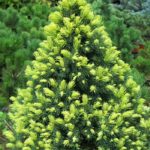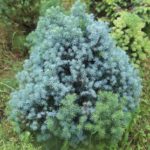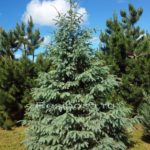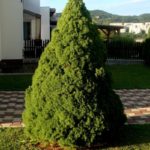Canadian spruce Konica is a very popular plant that is often used to decorate summer cottages. This crop has a compact size and a dense crown of regular shape. It is also characterized by beautiful small green-blue needles. The use of Konica spruce in landscape design helps to significantly improve the appearance of the garden.
Features of the tree
El Konika is a dwarf form of Canadian blue spruce. Under natural conditions it reaches 15-20 meters. The characteristic features of the plant include the following:
- Dimensions.An adult crop reaches a height of 3-4 meters. Moreover, the diameter of its crown is 2 meters.
- Rates of growth. In a suitable environment, the growth rate is 6-10 centimeters per year. At the same time, the crown in diameter increases by 3-5 centimeters.
- Crown shape. The tree is distinguished by a dense crown of a regular cone shape, which practically does not require shaping. In this case, the branches are arranged so tightly that they cover the tree trunk well.
- Needles and flowers. The tree is distinguished by medium-hard needles that are dark green in color. Their length is no more than 9-10 millimeters. The tree acquires maximum decorative value in May - during the budding period. The new needles have a soft texture and a bright green hue. By the end of summer they become dark and hard.
Today there are several varieties of Konika spruce. One of the most common plants is Alberta Globe. It is a coniferous shrub with a cushion-shaped crown. The height of the plant does not exceed 50-80 centimeters. At the same time, the growth rate is 2-3 centimeters per year. The crop can be grown in open ground or planted in a container.
Application in landscape design
Many summer residents use this type of spruce to decorate their garden plots. A tree can decorate any flower garden or area. This is due to its excellent decorative properties.
As a hedge
Coniferous perennials can be used to create a beautiful hedge. During the first 8-10 years, the Konik spruce does not need to be pruned. To get an attractive fence, you should use the Alberta Globe variety. This coniferous plant is resistant to pathologies, parasites, and frost.
Creating a hedge from spruce of this variety will help achieve the following results:
- saturate the air with phytoncides;
- provide protection from the wind;
- trap dust and precipitation.
Single landings
When grown as a tapeworm, Canadian spruce does not stretch upward, but forms a beautiful, high-density crown. The plant is planted taking into account the compositional background. In this form, Konika looks best in a well-groomed area.
Compositions
Konika spruce goes well with other crops. It can also be used in mixborders, forming decorative compositions with perennials. Blue-green needles look great with roses, irises and lilies.
Planting and caring for an ornamental tree
In the middle zone, spruce should be planted in the spring, although this is also acceptable in the fall. The optimal timing is from late April to early May. In this case, the plant will be able to get stronger enough and grow a root system in the cold weather.
In areas with long and warm springs and hot summers, it is worth planting from late August to early September. In winter, it is better not to carry out planting work.
To plant a spruce you need to do the following:
- Dig a hole for planting measuring 50-70 centimeters. At the bottom of the pit it is worth laying a drainage layer of sand, crushed stone or expanded clay. Its thickness should be 15-20 centimeters. You also need to prepare the substrate. To do this, it is recommended to mix leaf soil, turf, sand and peat in a ratio of 2:2:1:1.
- When planting several plants, it is recommended to maintain an interval of 2-3 meters.
- Pour part of the prepared substrate onto the bottom and place the seedling on top. The root system of the plant should be straightened and the spruce should be covered with the remaining soil. It is important to ensure that the root collar is flush with the ground surface.
- Create a circle around the trunk. It needs to be mulched with peat, tree bark or wood chips. Thanks to this, it will be possible to retain moisture in the ground.
- Water the plant. 10-12 liters of water are required for 1 seedling.
- When purchasing a plant in a pot, you do not need to add additional fertilizer. In other cases, it is advisable to use a solution to strengthen the roots.
After planting the plant, it is important to provide it with complete and high-quality care. The following features should be taken into account:
- In spring and autumn, carry out preventive treatment with copper-based products.
- From the end of February, cover the spruce from sunburn. During this period, active evaporation of moisture is observed. At the same time, the root system is not able to replenish it. In summer, the southern part of the tree should be covered by buildings or other plants.
- The crown is cleaned 2 times at the beginning of the season or 1 time in the fall.
- Water the plant regularly throughout the season. The soil must remain moist. It is important to avoid stagnation of moisture.
- In the summer, sprinkle the crown every day.
- In the first 2 years after planting, loosen the soil. Subsequently, this procedure can be replaced by mulching. To do this, you should use pine bark or acidic peat.
- In the first year after planting, the spruce needs to be covered for the winter. Subsequently, it is enough to mulch the tree trunk circle.
- At least 2 times during the season, apply special preparations that are intended for conifers.
- Regularly treat Konik with chelate complexes containing Epin and magnesium sulfate. When growing crops in the sun, the procedure is carried out at intervals of 2 weeks.
- Inspect the spruce every week to identify symptoms of pathologies and pests. This should be done with a magnifying glass.
Konica spruce is a fairly attractive ornamental plant, which is often used to decorate plots. In order for a culture to develop normally, it needs to be properly cared for.

